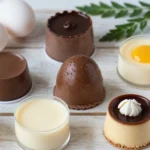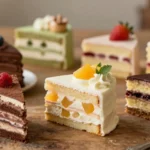Nothing captures the magic of the holiday season quite like the warm spice of gingerbread cookies filling your kitchen. We’ve perfected these time-honored recipes that’ll transport you straight to cozy winter nights and festive family gatherings. The combination of molasses, cinnamon, ginger, and cloves creates that unmistakable flavor we all crave during the holidays.
Whether you’re planning to build an elaborate gingerbread house or simply want to create delicious treats for cookie exchanges, we’ve got you covered. Our collection includes everything from classic soft gingerbread cookies to crispy versions perfect for decorating. Each recipe delivers that perfect balance of sweetness and spice that makes gingerbread so irresistible.
We’ll walk you through foolproof techniques that guarantee bakery-quality results every time. From mixing the dough to achieving the ideal texture, these recipes will become your go-to favorites for years to come.
Ingredients
Our classic gingerbread cookie recipe uses simple pantry staples that combine to create those beloved holiday flavors. We’ve organized the ingredients by category to make your baking process smooth and efficient.
Dry Ingredients
- 3 cups all-purpose flour
- 1 teaspoon baking soda
- 1/2 teaspoon salt
- 1/2 cup granulated sugar
- 1/2 cup packed brown sugar
Wet Ingredients
- 1/2 cup unsalted butter, softened
- 1/2 cup molasses
- 1 large egg
- 2 tablespoons milk or heavy cream
Spices and Flavorings
- 2 teaspoons ground ginger
- 1 teaspoon ground cinnamon
- 1/2 teaspoon ground cloves
- 1/4 teaspoon ground nutmeg
- 1 teaspoon vanilla extract
Equipment Needed
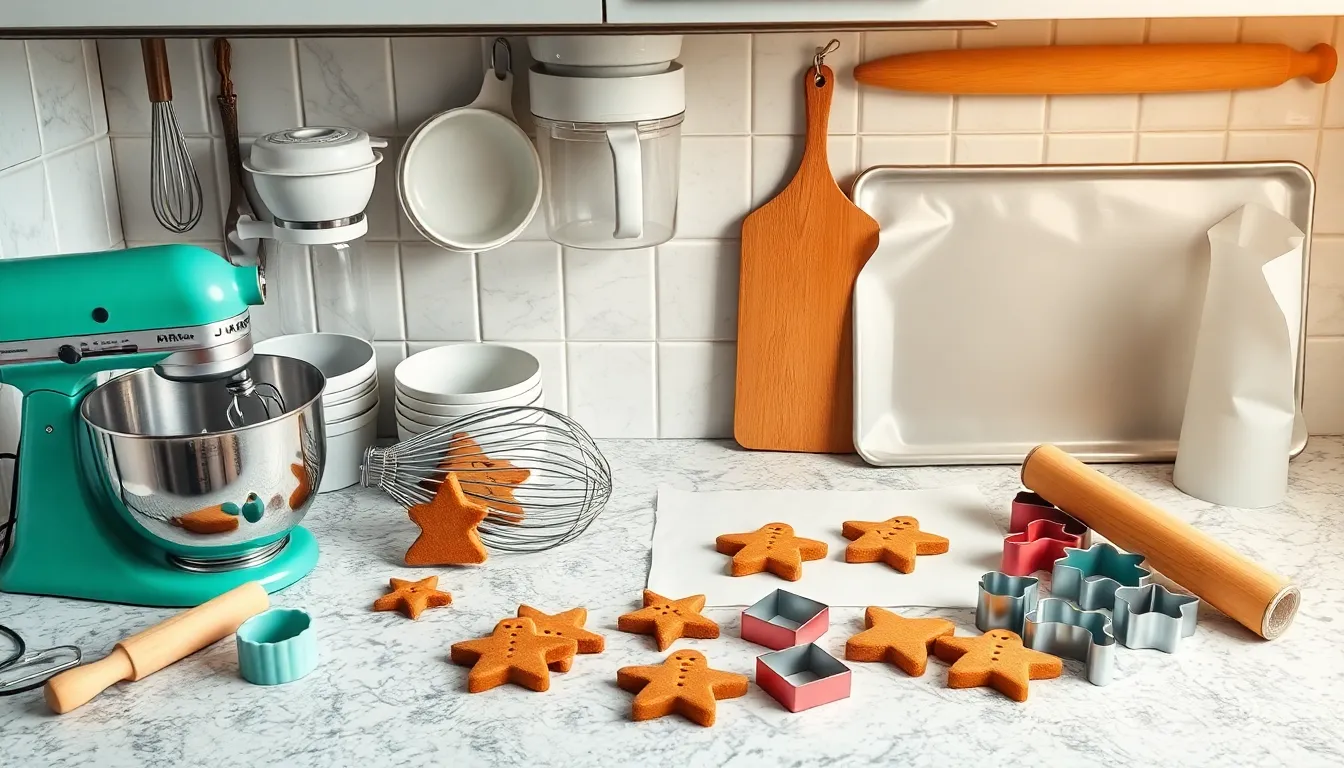
Having the right tools makes our gingerbread cookie baking experience smooth and enjoyable. We’ve compiled this essential equipment list to ensure your cookies turn out perfectly every time.
Mixing Equipment
- Large mixing bowl for combining ingredients
- Whisk for blending dry ingredients evenly
- Hand mixer or stand mixer for creaming butter and sugar to the perfect consistency
Baking Essentials
- Sheet pan or cookie sheet for baking our cookies
- Parchment paper or silicone baking mat to prevent sticking and ensure easy removal
- Rolling pin for achieving uniform dough thickness
- Cookie cutters in various shapes for creating festive designs
Preparation Tools
- Plastic wrap for wrapping dough during the chilling process
- Spatula for gently transferring delicate cookies
- Cooling rack for proper air circulation while cookies cool
We recommend chilling your dough before rolling to make handling much easier. Using parchment paper or silicone mats prevents our cookies from sticking to the pan while maintaining their perfect shapes. Remember to bake at moderate temperatures to avoid burning these delicate treats.
Quality equipment truly makes a difference in achieving bakery-level results. Each tool serves a exact purpose in creating those perfectly spiced gingerbread cookies that will become your go-to holiday favorites.
Instructions
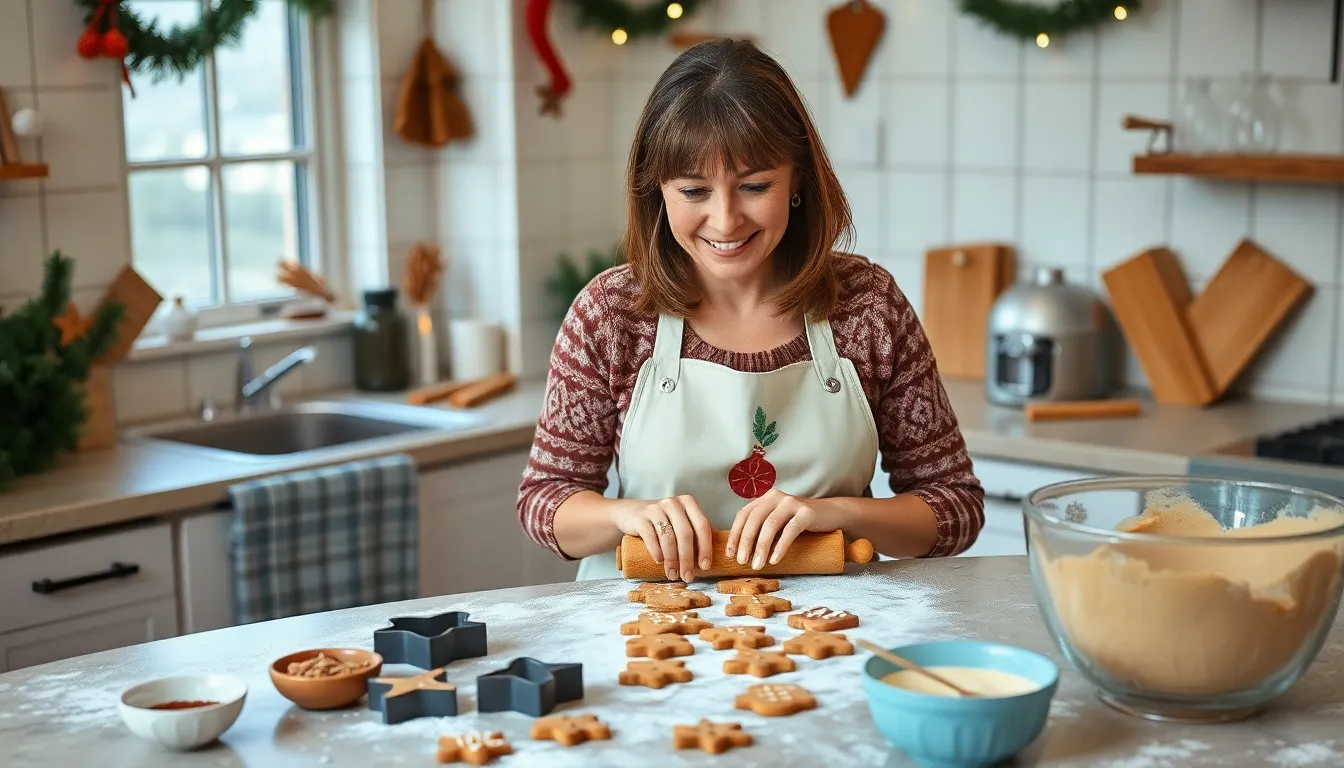
Now that we have our ingredients measured and equipment ready, let’s walk through each step to create perfect gingerbread cookies. We’ll break down the process into manageable stages to ensure consistent results every time.
Prep the Dough
We begin by combining our butter and brown sugar in a large mixing bowl, beating the mixture until it becomes light and fluffy. This creaming process takes about 3-4 minutes with an electric mixer and creates the foundation for our cookie texture.
Next, we add the egg, vanilla extract, and molasses to our butter mixture, mixing thoroughly until well combined. The molasses will give our dough its characteristic deep brown color and rich flavor.
In a separate bowl, we whisk together the all-purpose flour, baking soda, salt, ground ginger, ground cinnamon, ground cloves, and ground nutmeg. This ensures our spices distribute evenly throughout the flour.
We gradually add our dry ingredients to the wet mixture, mixing just until the dough comes together. Overmixing can lead to tough cookies, so we stop as soon as the flour disappears into the dough.
Chill the Dough
We divide our prepared dough into two equal portions and wrap each piece tightly in plastic wrap. This step prevents the dough from drying out and makes rolling much easier.
Our dough needs to refrigerate for at least 2 to 3 hours, though overnight chilling works even better. Cold dough holds its shape during baking and prevents our cookies from spreading too much in the oven.
Roll and Cut the Cookies
We remove one portion of chilled dough from the refrigerator and roll it out on a lightly floured surface to 1/4 inch thickness. Working with one portion at a time keeps the remaining dough cold and manageable.
Using our cookie cutters, we cut out desired shapes and transfer them to parchment lined baking sheets. We space the cookies 1 to 2 inches apart to allow for slight spreading during baking.
Any remaining dough scraps can be gathered, re-rolled, and cut again. We try to work quickly to prevent the dough from warming up too much.
Bake the Cookies
We preheat our oven to 350°F while preparing our final batch of cut cookies. Proper preheating ensures even baking from the moment our cookies enter the oven.
Our cookies bake for 8 to 10 minutes, or until the edges appear set but the centers still look slightly soft. The cookies will continue cooking on the hot pan after removal from the oven.
We let the cookies cool on the baking sheet for 2-3 minutes before transferring them to a cooling rack. This brief cooling time prevents the cookies from breaking while still warm and fragile.
Decorating Options
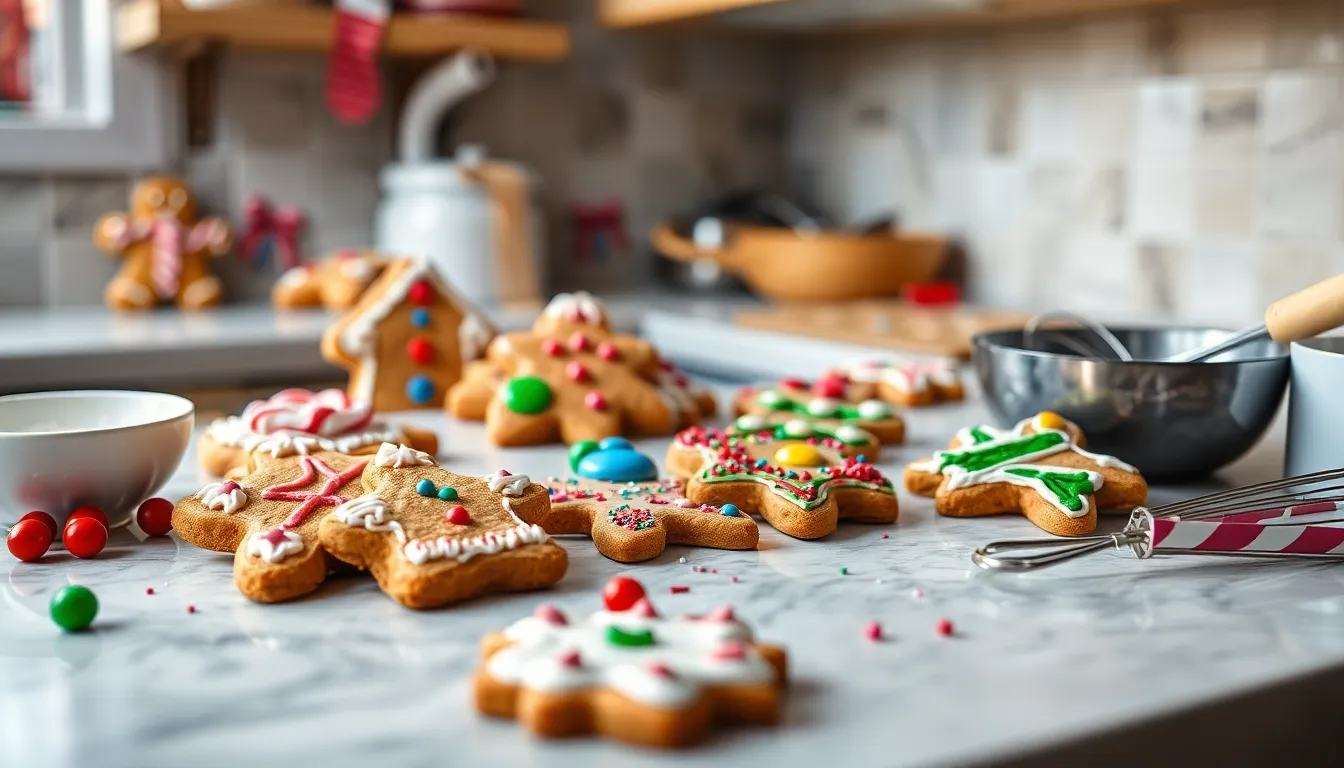
Once our gingerbread cookies have cooled completely we can transform them into stunning edible works of art. The following decorating techniques will help us create beautiful cookies that taste as amazing as they look.
Royal Icing
Royal icing creates the smoothest professional finish for our gingerbread cookies. We need 3 1/2 cups powdered sugar, 3 tablespoons meringue powder, 1/3 cup water, and 2 tablespoons vanilla or almond extract for this classic decorating medium.
First we whisk together the powdered sugar and meringue powder in a large bowl. Next we add the water and extract then mix until stiff peaks form. We can adjust the consistency by adding water one teaspoon at a time until we achieve the desired thickness.
This icing hardens to a smooth glossy finish that holds intricate piping details perfectly. We can divide the icing into separate bowls and add food coloring to create multiple colors for detailed designs.
Simple Glaze
Simple glaze offers the quickest decorating solution when we want beautiful results without complex preparation. We combine 1 cup powdered sugar with 2 to 3 tablespoons milk or water for this effortless coating.
We whisk the powdered sugar and milk until the mixture reaches a smooth consistency. Adding more milk creates a thinner glaze that flows easily while less liquid produces a thicker coating that holds its shape better.
This versatile glaze works perfectly for dipping entire cookies or drizzling decorative patterns across the surface. The glaze sets within minutes and provides a sweet glossy finish that enhances the gingerbread flavors beneath.
Candies and Sprinkles
Adding candies and sprinkles brings instant color and texture to our decorated gingerbread cookies. We can use mini chocolate chips, colored sugar, nonpareils, or small candies to create eye catching designs.
The key to successful candy decoration lies in timing. We press the decorative elements onto our cookies while the icing remains wet so they adhere properly. Larger candies work best when we gently press them into the surface while smaller sprinkles can be scattered over the entire cookie.
These edible decorations allow us to customize each cookie for different occasions or recipients. We can create festive holiday themes with red and green elements or use pastel colors for spring celebrations.
Storage Instructions
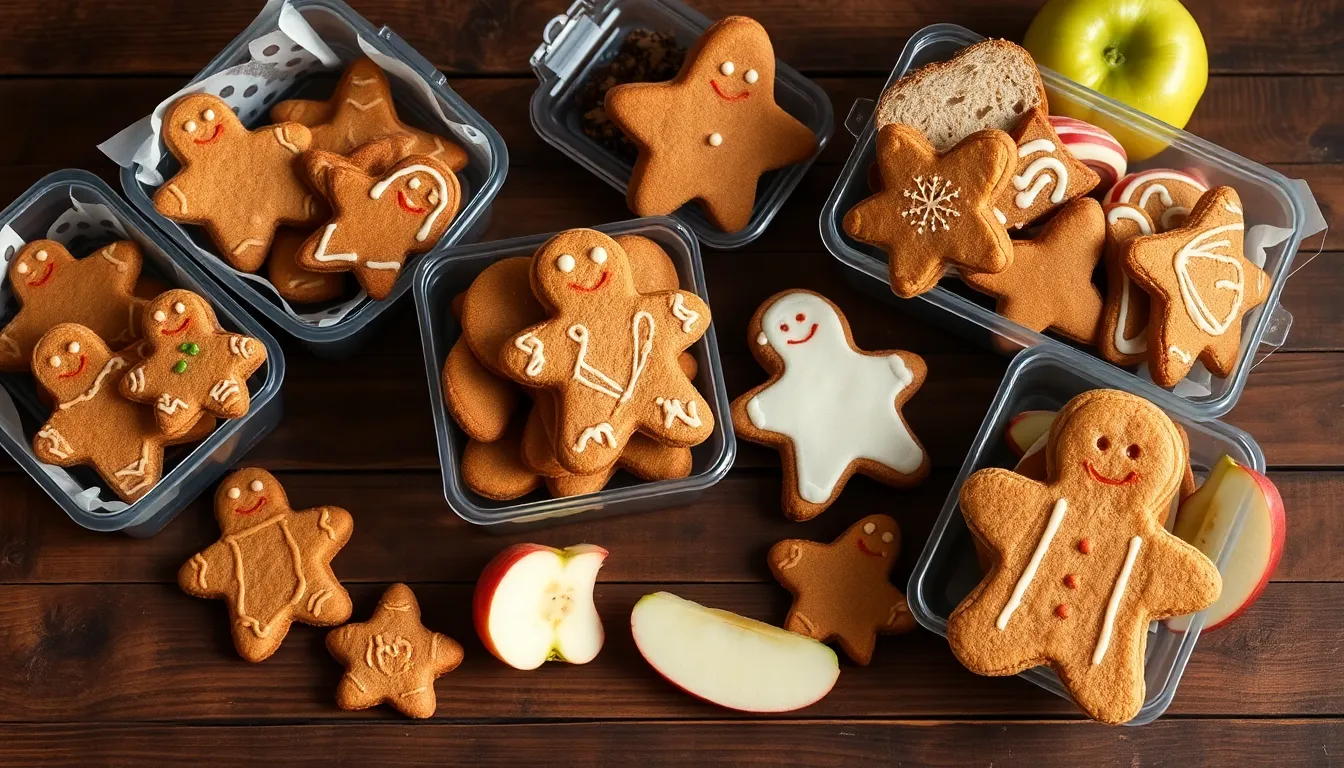
Proper storage keeps our gingerbread cookies fresh and flavorful for weeks. We need to consider whether our cookies are decorated or plain when choosing the best storage method.
Room Temperature Storage
Undecorated gingerbread cookies stay fresh in airtight containers at room temperature for up to 3 weeks. We can extend this freshness by adding a slice of bread or apple to the container to prevent the cookies from drying out. Store decorated cookies in airtight containers for up to 4 days since the icing reduces their shelf life.
| Cookie Type | Storage Duration | Container Type |
|---|---|---|
| Undecorated | Up to 3 weeks | Airtight container |
| Decorated | Up to 4 days | Airtight container |
Freezing for Long-Term Storage
Freezing extends the life of our gingerbread cookies for several months. We wrap undecorated cookies in plastic wrap before placing them in freezer-safe containers. Allow frozen cookies to thaw at room temperature for about 30 minutes before serving.
Decorated Cookie Storage Tips
Decorated cookies require special care to maintain their appearance. We must ensure the icing is completely set before stacking or storing. Place wax paper between layers in airtight containers to prevent the decorations from sticking together. These properly stored decorated cookies maintain their quality for up to two weeks.
Best Practices for Maximum Freshness
Remove as much air as possible from zip-top bags when storing undecorated cookies. We avoid storing different types of cookies together as flavors can transfer between varieties. Check stored cookies regularly and remove any that show signs of staleness to prevent affecting the entire batch.
Make-Ahead Tips

Planning ahead transforms gingerbread cookie baking from a rushed holiday chore into an enjoyable tradition. We recommend preparing your dough well in advance to maximize freshness and minimize stress during busy holiday periods.
Dough Storage Answers
Freshly mixed gingerbread dough benefits from extended chilling time. Divide your prepared dough into manageable portions and wrap each disk tightly in plastic wrap. Our testing shows that dough maintains optimal consistency when stored in the refrigerator for up to 3 days.
For longer storage periods, we freeze wrapped dough disks for up to 3 months without quality loss. Label each package with the preparation date and cookie type to maintain organization in your freezer. When ready to bake, transfer frozen dough to the refrigerator overnight for gradual thawing.
Cookie Storage Timeline
| Storage Method | Undecorated Cookies | Decorated Cookies | Maximum Duration |
|---|---|---|---|
| Room Temperature | Airtight container | Airtight container | 3 weeks / 4 days |
| Freezer Storage | Wrapped portions | Single layers | 3 months |
| Refrigerator | Not recommended | Short term only | 2-3 days |
Baked gingerbread cookies store exceptionally well when properly contained. Place undecorated cookies in airtight containers at room temperature where they maintain freshness for several weeks. We layer cookies between sheets of parchment paper to prevent sticking and preserve their shapes.
Freezing Baked Cookies
Flash freezing works best for decorated gingerbread cookies. Arrange finished cookies on baking sheets and freeze until solid before transferring to freezer containers. This method prevents frosting damage and maintains decorative details during storage.
Wrap individual cookies or small batches in freezer bags with excess air removed. We recommend freezing cookies in single layers to avoid breakage and preserve intricate decorating work. Thaw frozen cookies at room temperature for 15 to 20 minutes before serving.
Recipe Variations
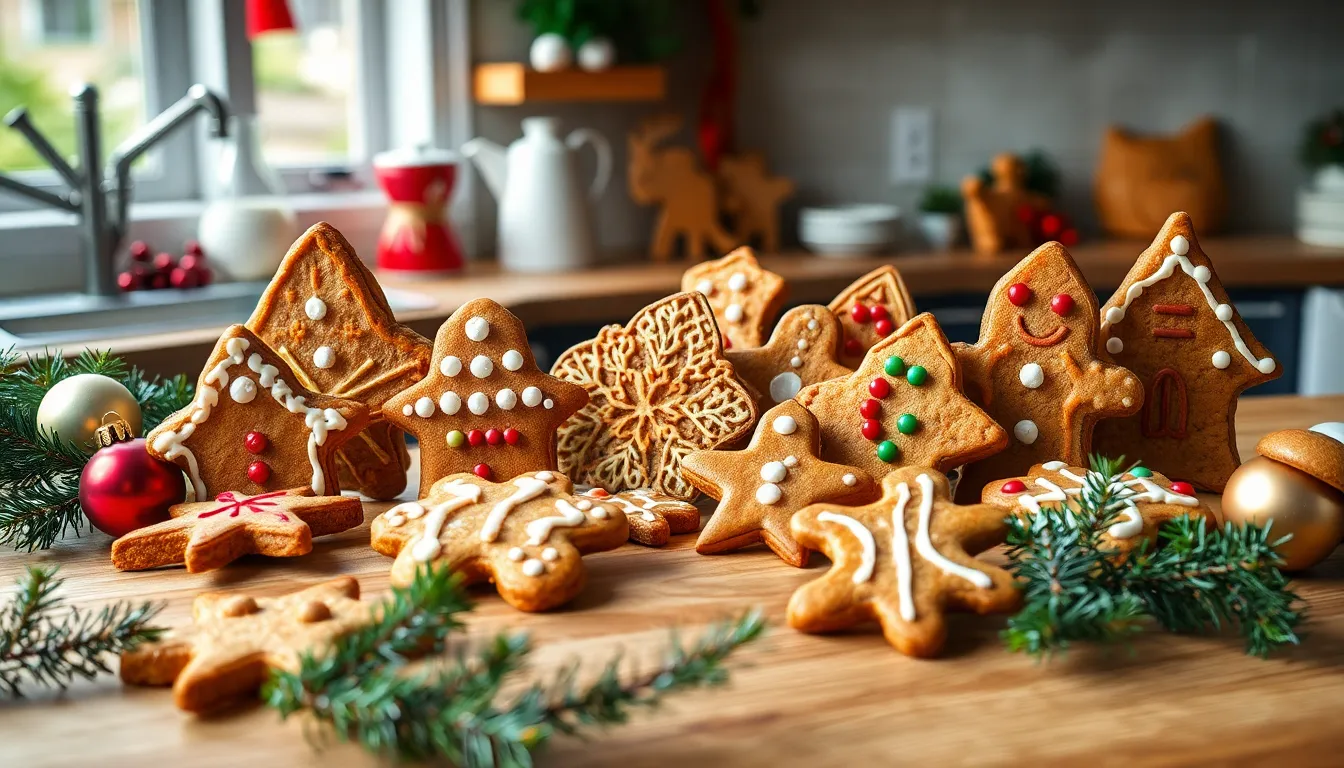
Our gingerbread cookie recipe adapts beautifully to create different textures and accommodate various dietary needs. These variations maintain the beloved spiced flavor while offering unique characteristics for every preference.
Soft Gingerbread Cookies
We achieve pillowy soft gingerbread cookies by adjusting our ingredient ratios and incorporating exact techniques. Our soft version uses additional softened unsalted butter and granulated sugar to create tender centers with slightly crisped edges.
Key Ingredients for Soft Texture:
- Extra softened unsalted butter (¾ cup instead of ½ cup)
- Additional granulated sugar (rolling dough balls in sugar before baking)
- Generous ground ginger and cinnamon for enhanced flavor
- Brown sugar for moisture retention
- Single large egg for binding
We recommend chilling this dough for several hours before shaping to prevent excessive spreading. Rolling the dough balls in granulated sugar before baking creates the signature sunken centers that make these cookies irresistible. The result is cookies that remain soft in the centers while developing perfectly crisp edges.
Optional Maple Glaze Enhancement:
- 2 tablespoons melted butter
- 3 tablespoons maple syrup
- 1 cup powdered sugar
- 2 tablespoons milk
- Pinch of salt
Crispy Gingerbread Cookies
Our crispy variation produces snappy sturdy cookies perfect for decorating or building gingerbread houses. We achieve this texture through strategic ingredient adjustments and exact baking techniques.
Modifications for Crispiness:
- Reduced molasses (¼ cup instead of ⅓ cup)
- Slightly increased all-purpose flour
- Additional baking soda for better rise
- Thinner rolling (⅛ inch instead of ¼ inch)
We roll this dough thinner and bake at slightly lower temperatures for longer periods to achieve maximum crispness. The reduced molasses content prevents excessive moisture while maintaining the signature gingerbread flavor. These cookies hold their shape beautifully during baking and provide an excellent canvas for detailed royal icing decorations.
Gluten-Free Version
Our gluten-free gingerbread cookies deliver the same beloved flavor and texture using carefully selected flour alternatives. We substitute all-purpose flour with a quality gluten-free flour blend specifically formulated for baking.
Gluten-Free Ingredient Swaps:
- 2¾ cups gluten-free flour blend (replaces all-purpose flour)
- Additional xanthan gum (if not included in blend)
- All other ingredients remain identical
We recommend using established gluten-free flour blends that contain xanthan gum for optimal structure and texture. The cookies maintain the same chewy or crispy characteristics as their wheat-based counterparts when proper flour blends are used.
| Variation Type | Key Differences | Resulting Texture |
|---|---|---|
| Soft Gingerbread | More butter and sugar | Pillowy with soft centers |
| Crispy Gingerbread | Less molasses, thinner rolling | Snappy and sturdy |
| Gluten-Free | Gluten-free flour blend | Matches original wheat texture |
Troubleshooting Tips
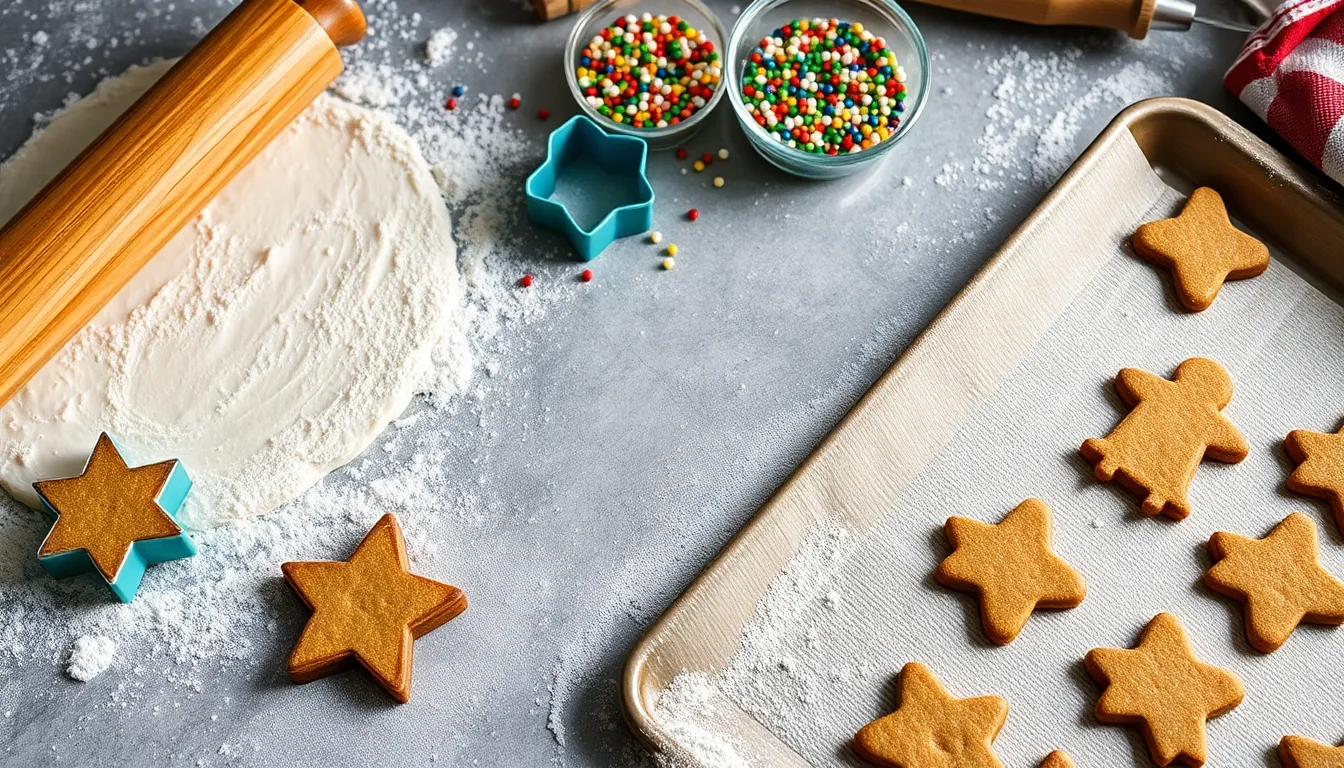
Even experienced bakers encounter challenges when making gingerbread cookies. We’ve compiled answers to the most common issues to ensure your cookies turn out perfectly every time.
Cookie Spreading Issues
Cookies that spread too much during baking lose their defined shapes and crisp edges. Add more flour to your dough when this happens – start with 2-3 tablespoons and mix thoroughly before testing with a small batch. Chilling the dough for an additional 30 minutes also helps maintain cookie shapes during baking.
Lumpy Dough Problems
Lumpy dough creates uneven textures and inconsistent baking results. Avoid combining all ingredients at once to prevent this issue. Instead, cream the butter and sugars first, then add eggs one at a time, followed by molasses. Gradually incorporate the dry ingredients until just combined.
Sticky Rolling Surface
Dough that sticks to your rolling pin and work surface makes cutting shapes nearly impossible. Generously flour both your work surface and rolling pin before rolling out the dough. Roll the dough between two sheets of parchment paper for even easier handling and cleanup.
Pale Cookie Appearance
Gingerbread cookies should develop a rich golden brown color during baking. Increase your baking time by 1-2 minutes if cookies appear too pale. Check your oven temperature with a thermometer – it may be running cooler than the display indicates.
Burned Edges
Cookies with burned edges while centers remain underbaked indicate uneven heat distribution. Lower your oven temperature by 25°F and extend the baking time slightly. Rotate your baking sheets halfway through the baking process to ensure even browning.
Sticky Cookie Texture
Cookies that feel sticky after cooling haven’t baked long enough to remove sufficient moisture. Return them to the oven for 2-3 additional minutes. You can also add an extra tablespoon of flour to future batches to absorb excess moisture during mixing.
| Common Issue | Primary Solution | Additional Fix |
|---|---|---|
| Cookie spreading | Add 2-3 tbsp flour | Chill dough 30 minutes |
| Lumpy dough | Mix ingredients gradually | Cream butter/sugar first |
| Sticking to rolling pin | Flour surface and pin | Use parchment paper |
| Pale appearance | Increase baking time 1-2 min | Check oven temperature |
| Burned edges | Lower temperature 25°F | Rotate baking sheets |
| Sticky texture | Bake 2-3 minutes longer | Add 1 tbsp flour to dough |
Conclusion
With these proven gingerbread cookie recipes and techniques in your baking arsenal you’re ready to create memorable holiday treats that’ll bring joy to your kitchen and your loved ones. We’ve equipped you with everything from classic recipes to creative variations plus troubleshooting tips that guarantee success every time.
The beauty of gingerbread cookies lies in their versatility – whether you’re crafting delicate decorated masterpieces or building sturdy gingerbread houses these recipes adapt to your holiday needs. The make-ahead options and proper storage methods we’ve shared ensure you can enjoy fresh homemade cookies throughout the entire season.
Start baking today and let the warm spices of ginger cinnamon and molasses fill your home with the unmistakable scent of holiday magic. Your perfectly spiced gingerbread cookies are just waiting to become part of your family’s cherished traditions.
Frequently Asked Questions
How long can I store gingerbread cookies?
Undecorated gingerbread cookies stay fresh for up to three weeks when stored in airtight containers at room temperature. Decorated cookies last up to four days. For longer storage, freeze cookies for up to three months by wrapping them properly and using flash freezing techniques for decorated varieties.
Can I make gingerbread cookie dough ahead of time?
Yes! Fresh gingerbread cookie dough can be refrigerated for up to three days or frozen for up to three months without losing quality. Properly wrap the dough in plastic wrap and store in airtight containers. This makes holiday baking much more manageable and enjoyable.
What ingredients do I need for classic gingerbread cookies?
You’ll need all-purpose flour, baking soda, salt, granulated and brown sugar for dry ingredients. Wet ingredients include unsalted butter, molasses, egg, and milk or heavy cream. Essential spices are ground ginger, cinnamon, cloves, nutmeg, and vanilla extract for that signature gingerbread flavor.
How do I prevent my gingerbread cookies from spreading while baking?
To prevent spreading, add a bit more flour to your dough and ensure it’s properly chilled before rolling. Use chilled baking sheets and avoid overworking the dough. Proper dough consistency and temperature control are key to maintaining perfect cookie shapes during baking.
What’s the best way to decorate gingerbread cookies?
Royal icing provides a professional finish and hardens completely, perfect for detailed designs. Simple glaze works great for quick decorating, while candies and sprinkles add color and texture. Let cookies cool completely before decorating, and allow each layer to dry before adding more details.
Can I make gluten-free gingerbread cookies?
Absolutely! Use a quality gluten-free flour blend as a 1:1 substitute for all-purpose flour. The recipe maintains the same beloved spiced flavor and achieves similar texture to traditional gingerbread cookies. Follow the same techniques and baking instructions for best results.
Why is my gingerbread dough too sticky to roll?
Sticky dough usually needs more flour or additional chilling time. Gradually add small amounts of flour until the dough is manageable, or refrigerate for an additional 30 minutes. Use flour on your rolling surface and rolling pin to prevent sticking during the rolling process.
What equipment do I need to make gingerbread cookies?
Essential tools include a large mixing bowl, whisk, hand or stand mixer, sheet pan, parchment paper, rolling pin, and cookie cutters. You’ll also need plastic wrap for chilling dough, a spatula for transferring cookies, and a cooling rack for proper cooling after baking.








